
Gallery Photographers
Partner
Artists-in-Residence
If you are unable to visit our gallery and would like to purchase photographs from this preview or others in the gallery, please contact the gallery and call 585-271-2540.
Partners' Picks of the Show
Driven to Abstraction
by Betsy Phillips
Gallery Partners have chosen their "Picks of the Show"
click here to return to the details of the exhibit
All images copyright by the individual photographers
Young Eagle at
Letchworth
David is an
accomplished photographer who has shown many times at Image City.
I wasn’t sure it was the same David when I saw all these
wonderful bird photos (and one tortoise) on the walls.
As his artist statement reveals, this is a newly developed
interest of Dave’s, compliments of COVID-19 providing more time to
work on this skill. I
have always admired wildlife photographers. You need a lot of time
and a lot of patience.
The photo of
the young eagle caught my eye immediately. Of all the photos in the
Neuberger Gallery, this one is actually a portrait… and a posed one
at that. You can see
that this is an immature, healthy bird. His head is cocked, perhaps
listening for David. He
is extremely attentive to his surroundings; ready to burst off that
post in a second should he spot food – or Dave! Dave has positioned
his head perfectly in the top third of the photo and the eye and
beak are tack sharp. These are skills brought over from Dave’s past
photographic experiences. Also note that Dave shot this upward.
There is no foreground, other than the post the bird is sitting on.
This gives the eagle a more regal and majestic perch. In his other
photos it is clear that Dave used a large aperture to provide a nice
soft background. In this photo that may not be the case. The
background clouds seem more in focus but softer.
The striation of the clouds run opposite the feathering of
the young eagle. There is a really nice separation between the bird
and the sky lending to a comfortable and natural background.
Thanks for this Dave.
Mysteries of Thought and Nature
In her
exhibit Lisa has created a powerful and thoughtful image by
combining several different photographs. This is a great
example of how “the sum can be much greater than its parts”
This is a
photograph that one cannot just look at and move on…it requires the
viewer to look carefully at the various parts and how they interact.
The components look almost like they are all made of stone, maybe
marble. The background is both eerie as well as intriguing,
with starts above what looks like a face or maybe not.
Books have
such strong symbolic interpretations…knowledge, learning, history,
etc. The hands are beautifully resting on the open book…one
wonders what the pages say but you cannot make this out.
Not only are
the tones of this photograph well-presented but the composition is
very strong with the eyes immediately moving to the hands and the
book, then enjoying the interesting background then going back to
the hands and book.
As Lisa says
in her artists statement, “Covid has affected photographers as they
are now limited to their immediate environment as well as putting
many of us in an isolated, introspective world”.
Blaze
Laura creates beautiful abstracts in this exhibit.
She is a visiting artist and her photographs reinforce that
decision.
These images
are “found,” they’ve captured relics of the past, weathered.
Most of us would just pass by these subjects, seeing only the entire
space they occupy. But in the capture of one of her images,
she has selected only a part of this relic at a particular angle and
perhaps changing the intensity of color or the contrast – always to
create a response in the viewer.
This is a bold presentation. The white stroke
could be a blaze by itself, dramatically interrupting the black
background. The orange blaze overpowers the white, placing the
white in the background. More than just the powerful strokes – each is
full of details, of structure. The power of this image lies in this
careful selection of her subject. The viewer is not sure if
this is part of traffic lines drawn on the seat, parts of letters
painted on a wall or many other possibilities. But the origin
is not critical, we can just enjoy the selection and presentation of
a clever selection of subject material and how it is rendered in her
photograph.
Under the Sea
Betsy excels finding beauty in
weathered or decaying substances. A rusted piece of metal, a
stained wall or other objects provide her with material for her
photographs. She often finds not only beauty but creates an
opportunity for the viewer to view themes.
Betsy is a master at putting colors
together that draws the viewer to continue looking. This is
easily seen in so many of the photographs that she presents in this
exhibition. She also uses a larger format which allows the
viewer to see all of the details of her work.
Under the Sea is a great
example of her work—the blue reminds of the sea and the color in the
foreground looks like coral. She allows us to assign in our minds
interpretations of her images.
The structures in the top half of the
photograph are so beautifully organic, with a real sense that these
shapes are really underwater. The blue haze that lingers at
the top is light gently sifting into the sea from the surface.
Just above the blue at the center of
the photograph is a dark region that suggests depth – the dark
region isn’t really “above” but rather behind the brighter blue
area.
So, guided by
Betsy, we can let our imagination take us on a journey beyond what
was the original subject.
The Rage of Ontario
Kevin writes that his goal in photography is “to create a mood, a
feeling and a connection for him and any other person viewing the
photo.” The Rage of Ontario” certainly achieves that goal. Kevin
starts out by placing what could be the subject, the light house,
dead center, a clear violation of one of the ‘rules’ of photography.
However, the light house is clearly not the subject; the lake is,
particularly the volume of spray to the right of the light house
occupying about 10% of the photograph. Kevin likely used a fairly
fast shutter speed, judging by the water droplets that may be seen
in the wave action to the right and foreground. Yet, he edited the
spray to appear as a massive object. To continue his metaphor, rage
usually denotes uncontrolled and unclear specification of anger.
Kevin is very conscious of the effect of clouds in his exhibit. The
anthropomorphic depiction of the threatening clouds completes the
emotional story that Kevin relates. Finally, this is a perfect
candidate for black and white to fully feel the rage of the scene.
On a side note, unless Kevin took this from his car, which I doubt,
the physical part of taking a picture in these wind conditions is
considerable. As one example – consider the sand on the beach that
is blowing around. Thank you, Kevin for a wonderful example of how
you connect with your audience.
Partners' Picks of Guest Photographers
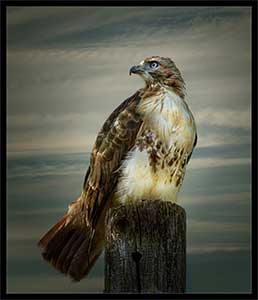
by David Braitsch
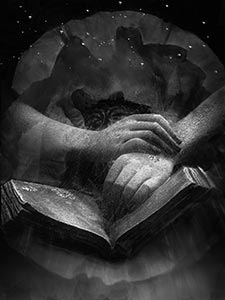
by Lisa Cook
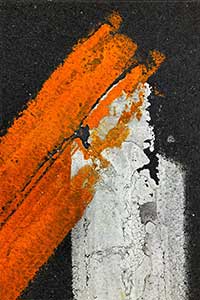
Laura Knecht
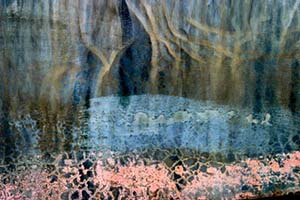
Betsy Phillips
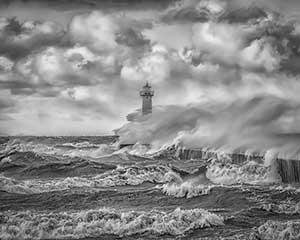
by Kevin Tubiolo
Image City Photography Gallery ♦ 722 University Avenue ♦ Rochester, NY 14607 ♦ 585.271.2540
In the heart of ARTWalk in the Neighborhood of the Arts